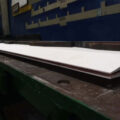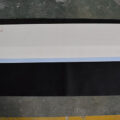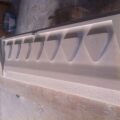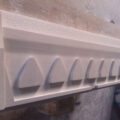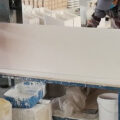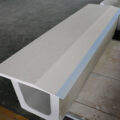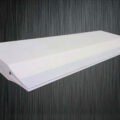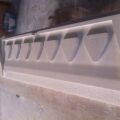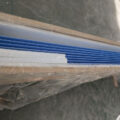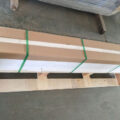The entire molten aluminum casting tip and nozzle can be formed of ceramic fiber material with high strength and high elasticity. Then, since the caster nozzle has excellent elasticity, the nozzle can be arranged in a state where the tip of the nozzle is pressed on the movable mold before casting, so that it is deformed within an elastically deformable range and is in close contact with the movable mold. In addition, since the caster nozzle is excellent in elasticity, it can follow the movement of the movable mold during the casting process. Therefore, without applying external pressure to the nozzle to make the gap between the tip of the outer peripheral edge of the nozzle and the movable mold small, the narrow gap can be kept to a certain extent.
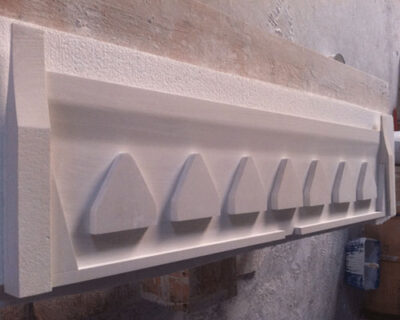
Generally, the spacing between the upstream portions of the two halves of the feed head is sufficient to maintain the required gap between the downstream edges of the casting head. If required, one or more additional spacers can be provided in the middle between the upstream part and the downstream edge. This gasket, if used, should be reasonably streamlined to avoid interference with the flow of metal through the feed end.
The space between the spacers provides a means for liquid metal to enter the gap between the two halves of the molten aluminum casting nozzle. The cross-sectional area of the space at the upstream portion of the metal flow-through tip is preferably larger than the cross-sectional area of the gap between the downstream edges of the metal flow-through tip. This ensures that the speed of the metal increases rather than decelerates as it passes through the tip.
The gap through which the molten metal flows between the upstream and the downstream is obviously tapered, which is also ideal for reducing the sudden change of the metal flow velocity at the top of the continuous casting machine. This arrangement can minimize the discontinuity of metal flow and avoid the introduction of impurities in the thin plate formed by the continuous casting machine. The substantially flat inner surface also allows the member to be thicker near the downstream edge and increase strength.

